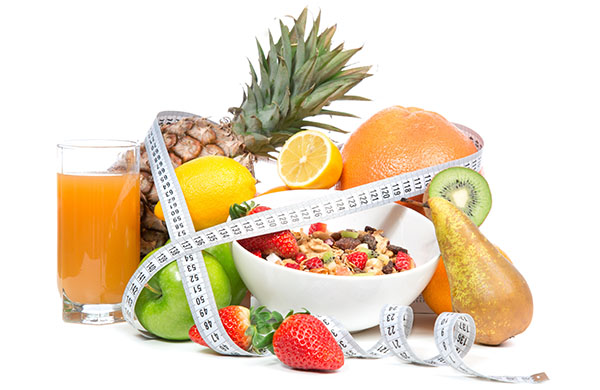 On a daily basis, we consume varying combinations of three macronutrients: carbohydrates (breads, pasta, potatoes, etc.), proteins (chicken, eggs, fish, etc.) and fats (olive oil, avocados, nuts, etc.). How we balance our meals with these three macronutrients has a powerful effect on the body’s ability to regulate its physiology. Too much of one in the absence of the others can lead to hormonal swings that can have a negative impact on our body composition and hinder our ability to lose weight.
On a daily basis, we consume varying combinations of three macronutrients: carbohydrates (breads, pasta, potatoes, etc.), proteins (chicken, eggs, fish, etc.) and fats (olive oil, avocados, nuts, etc.). How we balance our meals with these three macronutrients has a powerful effect on the body’s ability to regulate its physiology. Too much of one in the absence of the others can lead to hormonal swings that can have a negative impact on our body composition and hinder our ability to lose weight.
One of the biggest mistakes made by those trying to lose weight is consuming meals made up mostly of carbohydrates. For example: oatmeal and fruit or cereal and orange juice. Eating carb-dominant meals like these on a regular basis will lead to powerful blood sugar spikes, ultimately promoting fat storage over time and having a negative impact on weight-loss efforts.
When someone is overweight, carb-dominant meals pose an especially serious challenge. As a general rule of thumb, the greater your body-fat percentage (the more excess fat-tissue you have), the less your body is able to process carbohydrates (especially in a carb-dominant meal). Remember, it’s not that carbohydrates are necessarily bad for us (as some publications and people might lead you to believe)—it’s all about understanding who you are, where you are at and what your goals are. Having said that, if your goal is to lose weight, carbohydrate-dominant meals like the ones mentioned before are not the way to go.
Let’s examine how we can balance our meals using fats and proteins to aid our weight-loss efforts:
Fats
Fats have had a bad reputation over the years but, luckily, a lot of the old myths surrounding their negative health implications are being debunked. When it comes to balancing a meal, it’s important to make sure we have a healthy source of fat. Fats help slow the digestive process. In other words, consuming fats as part of a meal will decrease the rate at which our blood sugar levels increase. As a general rule: the more we can control our blood sugar levels, the more we can stabilize our internal physiology and regulate our body-weight.
Tip:
Reduce the amount of carbohydrates in a carbohydrate-dominant meal by replacing them with healthy fats like nuts and seeds.
Protein
Protein is a vital nutrient used for many functions in the body, including regenerating tissues and supporting detoxification pathways. Unfortunately, most people do not consume enough protein in their diets—instead, they are over-consuming carbohydrates.
One way to achieve a more balanced consumption of macronutrients is to increase your protein intake while decreasing your carbohydrate intake. Swapping out carbohydrates for proteins will reduce the overall carbohydrate load on the system, leading to a smaller blood sugar spike and more stable blood sugar levels.
Tip:
Reduce the amount of carbohydrates in a carbohydrate-dominant meal by replacing them with healthy sources of protein.
Protein also offers two great benefits key to weight loss:
1) Increased Metabolic Rate
Protein is the most difficult nutrient to digest. In other words, it takes more energy to break it down during the digestive process relative to the energy used to break down carbohydrates and fats. This equates to a greater metabolic boost, which is conducive to fat-loss.
2) Satiety: Sense of Fullness
Consuming more protein ultimately causes you to feel full longer, leading to reduced cravings and less food consumption over time—both powerful steps towards fat loss.
Fiber
Making sure that you include a high-quality source of fiber with each meal is another positive step towards weight loss. Adding some fiber into a meal will further reduce the rate at which our blood sugar levels spike while also contributing to a sense of fullness.
Tip:
Add 1 tablespoon of ground flax seeds or chia seeds to a given meal.
Everything applied
Now, let’s look at how we can apply these three tips to a carbohydrate-dominant meal like a bowl of oatmeal and fruit. First, to add in a healthy source of fat, replace one-third of the oatmeal and fruits with a small handful of crushed walnuts. Then, to get the protein we need, replace another third of the oatmeal and fruits with 1-2 eggs. Finally, stir in some ground flax seeds or chia seeds to boost the amount of fiber. The result? A meal that does a much better job of balancing macronutrients—helping to better regulate your blood sugar, increase your satiety and reduce your appetite. This is a sure formula for weight-loss success!
Conclusion
As we’ve seen, how we structure our meals is key to balancing our physiology—especially when it comes to fat loss. Building the habit of regulating our nutrient intake starts with asking yourself two key questions before each meal: “Have I balanced the three macronutrients (carbohydrates, proteins and fats)?” and “Do I have a source of fiber?” The more you ask these questions, the better you will become at harmonizing the three main nutrients—eventually, it will become an unconscious habit!
